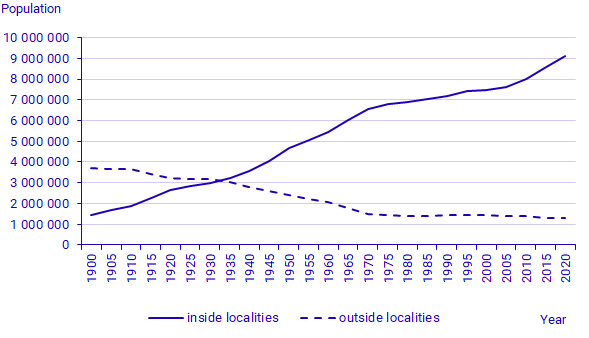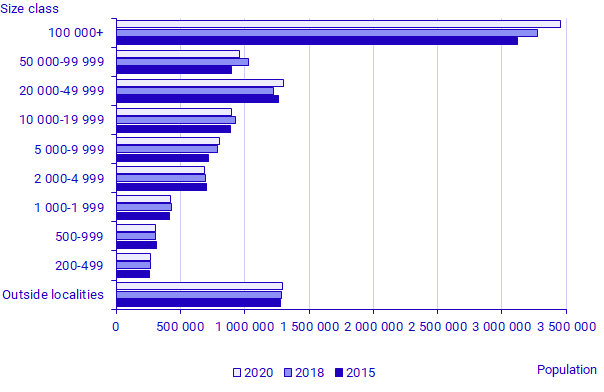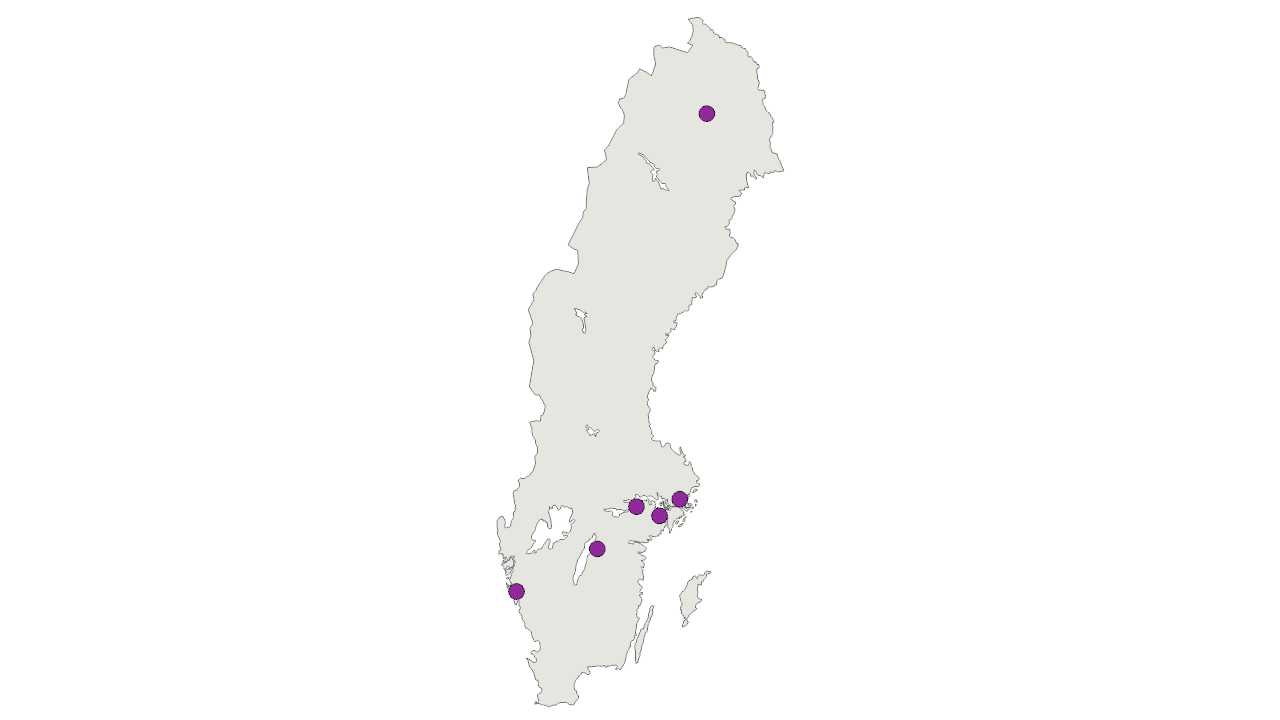Localities and urban areas 2020
Increasing proportion of people live in urban areas
Statistical news from Statistics Sweden 2021-11-24 9.30
At the end of December in 2020, 88 percent of Sweden’s population lived in an urban area. This proportion is somewhat higher compared with Statistics Sweden’s most recent measurement, which referred to 2018. One-third of the country’s population lives in an urban area with more than 100 000 inhabitants. There are ten such localities in Sweden.
There are more than 2000 localities in Sweden. This includes localities with only a few hundred inhabitants as well as the major cities Stockholm, Göteborg, and Malmö. Statistics Sweden’s figures show data on statistical localities, that is, continuous settlements with at least 200 inhabitants.
More than 9 million people live in urban areas
At the end of 2020, Sweden had a population of just under 10.4 million inhabitants, of whom just over 9 million lived in a locality. In the last five-year period, the population in localities has increased by just over 500 000 people, equivalent to 98 percent of the total population growth during the same period.
Around 1.3 million people were registered as living outside a locality, which is just over 12 percent of Sweden’s total population. The population living outside statistical localities live in sparsely population areas, or in small locality groups with at most 199 inhabitants. The proportion of people living outside localities has decreased by 0.5 percentage points since 2015, despite an increase in the number of people living outside localities. At the end of 2020, there were 12 400 more people living outside localities than in 2015. The decline in proportion is due to the fact that the major share of population growth occurred in localities.

Source: Statistics Sweden
One in three people live in a locality with more than 100 000 inhabitants
Most of Sweden’s localities are small; roughly half of them have fewer than 500 inhabitants. Localities with fewer than 5000 inhabitants account for 88 percent of the total number of localities, according to Statistics Sweden’s figures. At the same time, the majority of Sweden’s population lives in one of the largest localities. In 2020, 64 percent of Sweden’s population lived in a locality with at least 10 000 inhabitants. This corresponds to 6.6 million people. Among these people, just under 3.5 million lived in one of the ten largest localities, that is, in a locality with more than 100 000 inhabitants. This corresponds to one third of the total population of Sweden in 2020.
The population in localities with more than 100 000 inhabitants has increased by just under 330 000 people since 2015. This increase is partly due to the fact that Jönköping locality changed size class, as it noted more than 100 000 inhabitants in the latest survey. Leaving this aside, the largest population growth still occurred in the largest localities.

Source: Statistics Sweden
New localities form close to large localities
There were 61 new localities registered in the statistics in the 2020 survey. All new localities had fewer than 1000 inhabitants each. Most of them have appeared in the statistics before, in the form of small population centres or older localities. As a result of new development and population, they are classified as statistical localities in the 2020 figures. Only six areas are completely new and consist mainly of new development. The areas are relatively evenly spread around the country, from Gällivare municipality in the north to Mölndal municipality in Västra Götaland County. All of the completely new localities are adjacent to a larger locality.

Definitions and explanations
In Statistics Sweden’s statistics, a locality refers to a continuous settlement with at least 200 inhabitants. Statistics Sweden delimits localities geographically and statistics are based on these localities. Settlement density is measured using digital maps from Lantmäteriet that contain information on buildings, properties, roads and land. The distance between buildings in a locality varies based on several factors, including the number of people in the population register and employees in the various parts of the locality. The largest possible distance is 500 metres. Information on population and employees is collected from Statistics Sweden’s register and is combined with information on addresses.
”Statistical locality” is a concept used in statistics to indicate that the statistics are based on register data and other statistics. Statistics Sweden’s localities may therefore differ from definitions and delimitations of Swedish localities in other parts of society.
Next publishing will be
The next statistical news in this series will be published in 2022.
Feel free to use the facts from this statistical news but remember to state Source: Statistics Sweden.
